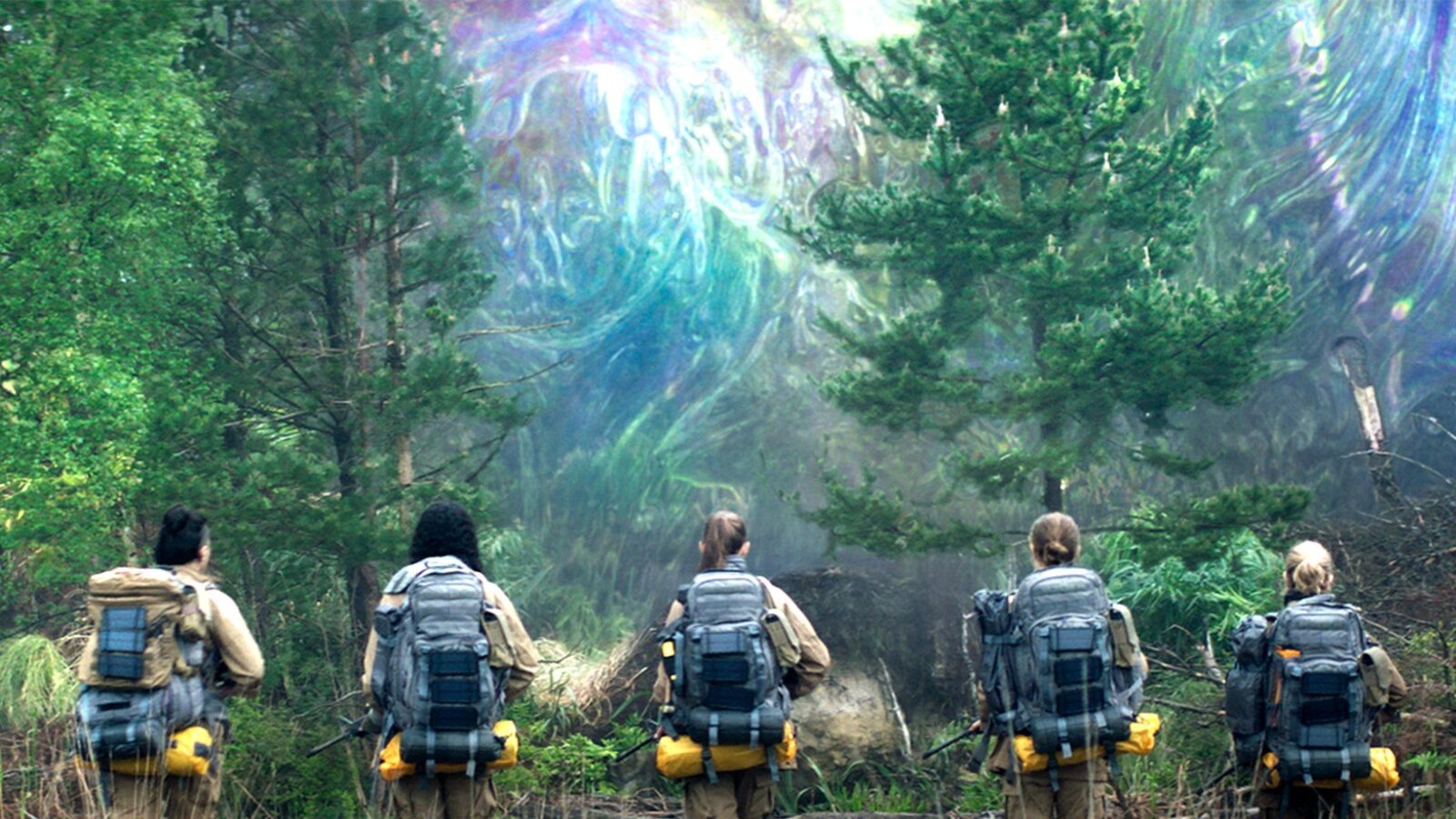
Is she who she was before? Or, has she become an amalgamation of genetic material thrust upon her by the Shimmer? Annihilation questions the self-importance of human identity by stripping away our deeply embedded individuality and making the case that we are nothing more than cells that can be pulled apart, replicated, and replaced.

After her interaction with the extraterrestrial, moreover, Lena’s identity seems to have shifted. When she comes into contact with it, the alien perfectly mimics her looks and discloses her own individual genetic makeup as something that can be copied and replicated. The visually shapeless, blank entity molds itself into the human form and then proceeds to perfectly mime Lena’s actions, thus rendering her unique movements moot. Lena’s interaction with the alien entity furthers the cheapening of the self-importance of humanity. Annihilation, it seems, works to ask us questions regarding how easily our agency can be disrupted or effaced. However, the idea of death seems to fall short of the thought of being dissolved, of being separated from our individual identity and scattered by an indifferent entity. Annihilation.” In this moment, Annihilation hits at one of the most terrifying concepts in humanity. Ventress when she says, “I don’t know what it wants or if it wants…Our bodies and our minds will be fragmented into their smallest parts until not one part remains. Indeed, the indiscriminate nature of cellular reproduction and mutation is a large part of the terror within the film. This layering provides a brutal subtext to the film, which invites the viewer to question their understanding of the intricate cellular design of existence and the horror of genetic mutation. As Lena checks her blood from within the Shimmer, we begin to see the initial designs of the amorphous creature she confronts at the climax. Images of cells begin simply enough but become increasingly complicated as the film progresses. Outside the plot and characters, the film is further complicated by the consistent dialogue and imagery associated with cells and genetics. Likewise, her compatriots all suffer from various afflictions that inspire their voluntary entrance into what is believed to be a suicide mission. Lena suffers the consequences of a husband who is assumed dead and an affair that plagues her subconscious. It becomes obvious early in the film that the characters are dealing with far more obstacles than the encroaching presence of a (potentially alien) threat. Garland is successful in adding layers to the simplicity of the movie. After it crash lands, this object begins to spread outwards creating a visual wall, named the “Shimmer.” Lena (Natalie Portman), Ventress (Jennifer Jason Leigh), Radek (Tessa Thompson), Thorenson (Gina Rodriguez), and Sheppard (Tuva Novotny) are sent into the Shimmer to investigate the cause of the supernatural event and find information that could end its spread outward. Something falls from the sky and crashes into a lighthouse in an undisclosed location. The film thrives on terrifying questions regarding the importance of humanity in an uncaring universe. As a director, Garland seems to enjoy twisting our understanding of reality.

Thankfully, Annihilation is one of the most visually stunning and amazingly-realized science fiction/horror films to hit the screen to date. In a world of renewed interest in science fiction and horror (see Mute, The Ritual, Bladerunner 2049, Valerian, etc.) there are a lot of flops (see Mute).

Alex Garland has surpassed every expectation with Annihilation (2018). When your directorial debut is something as beautiful, trippy, seductive, and amazing as Ex Machina (2014), you have big shoes to fill.


 0 kommentar(er)
0 kommentar(er)
